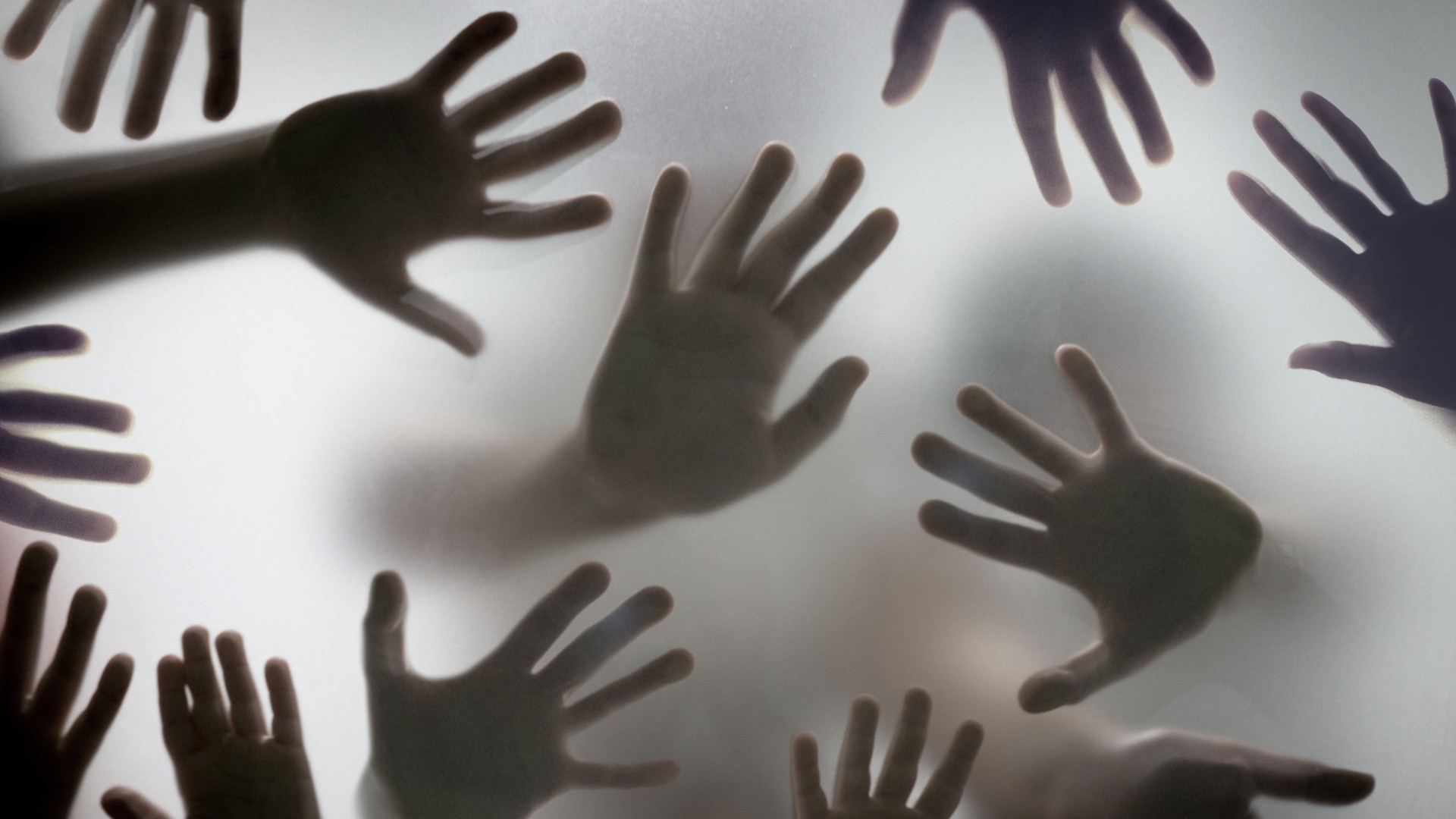Why do people have phobias?
Does evolution play a role?

Most people can think of something that's especially terrifying to them. Maybe they're scared of spiders — up to 15% of Americans have arachnophobia — or they have a fear of flying, which some studies suggest affects around 1 in 5 people.
But why do we experience fears and phobias?
First, it's important to note the difference between a phobia and a reasonable reaction to something that is fundamentally dangerous or unpredictable.
"A phobia is a fear of a particular situation or object that is out of proportion to the objective reality and interferes with a person's life," Ron Rapee, a professor of psychology and founding director of the Centre for Emotional Health at Macquarie University in Australia, told Live Science in an email. "Most phobias show essentially the same characteristics, and differ only in the particular focus of the fear.
Related: What is the 'call of the void'?
"Common characteristics include avoidance of the feared situation or object; worried or negative thoughts; and physical symptoms when faced with the fear, such as increased heart rate, pupil dilation, and increased respiratory rate," Rapee said.
Most people will be cautious and wary upon encountering dangerous situations or objects, but sometimes these "realistic" fears can move beyond what most people would see as "commensurate with the reality of the situation," Rapee explained. This is when people's reactions to such scenarios tend to be labeled excessive or irrational.
A debilitating aversion to water is, according to Rapee, an example of a sensible, entirely rational "precaution" that can transform, for one reason or another, into a full-blown phobia. And it's possible that some of the most common phobias, such as a fear of heights (acrophobia), actually arose due to evolutionary pressures.
Sign up for the Live Science daily newsletter now
Get the world’s most fascinating discoveries delivered straight to your inbox.
"In most cases, phobias are found in relation to realistic and evolutionarily sensible objects and situations," Rapee said. "For example, one almost never sees a phobia of electric wires or sockets (even though these can kill you), but it is common to see phobias of storms or snakes or spiders — in other words, things that could kill us in ancient times."
However, it's still unclear why fear or caution evolves into a phobia for some, but not all.
"A common theory is that phobias are 'learned' at key developmental periods, (usually) earlier in life (most phobias first emerge in childhood)," Rapee said. "This learning may come from a bad experience (e.g., being bitten by a dog), but this is probably the exception, since most people with phobias can't report specific traumatic experiences."
The psychodynamic theory, first contemplated by Sigmund Freud, suggests that many behaviors and fears can be linked to experiences in childhood. In particularly traumatic cases, the memory of these early-life events can be repressed, the theory claims, and could end up manifesting in phobias later in life. However, some experts, such as Dr. Joel Paris, a professor of psychiatry at McGill University in Canada, have suggested "the absence of solid and persuasive evidence for the theory" means that, while repressed memories may play a role in the development of phobias for some people, it's unlikely to be the case for the majority.

In fact, a person doesn't have to have a negative experience to develop a phobia; they could see someone else have a bad experience, or be told or shown repeatedly that something is dangerous. In other words, a parent frequently warning a child about the dangerous ocean, or a person watching movies such as "Jaws" and "Titanic," which showcase the sea as menacing and lethal, could conceivably catalyze the development of thalassophobia, a fear of large bodies of water.
Related: Does everyone have an inner monologue?
"Over time, this [learning] might cause fears to be culturally clustered around certain animals, objects or situations," Chris Askew, a lecturer in psychology at the University of Surrey in the U.K., told Live Science.
But it's possible that not all phobias are learned. Some psychologists have suggested that certain concerns and worries might actually be innate — a concept called "nonassociative account," according to a 1998 study in the journal Behaviour Research and Therapy.
"Proponents of this account argue that we are genetically predisposed to fear certain things and a negative learning experience isn't necessary," Askew said.
While this idea is still debated, it does seem that people with certain traits are more likely to develop phobias.
For example, people who are "more temperamentally fearful and emotional" tend to be more likely to develop phobias, Rapee said. "Emotional types of people are more likely to have a variety of fears and phobias, including fears of water," he said.
"A person's innate nature, or temperament, might be a risk factor," Kelvin Wong, a clinical psychologist at La Trobe University in Australia, told Live Science in an email. "An example is neuroticism, or a person's personality where they experience the world as distressing, threatening, or unsafe. Another example is behavioral inhibition, which describes a temperament that reacts poorly to novel situations."
According to Askew, phobias and feelings of anxiety may even run in families. "It may be that some people are more genetically predisposed to developing a phobia," Askew noted. Indeed, research published in 2017 in the medical journal Dialogues in Clinical Neuroscience found that generalized anxiety disorder is about 30% inherited.
There is also evidence that the "shared family environment" could be key, with Askew suggesting "that a person's experiences are particularly important."
So, with this in mind, why do people tend to retain phobias for an extended period? And is it possible to get rid of them?
"Phobias probably last a long time because most people with a phobia avoid the thing they're afraid of," Rapee said. "In other words, they do everything they can to not encounter the object or situation and, in that way, they maintain their fear.
"To overcome a phobia, you need to face your fear," he said. "In professional terms, this is usually referred to as exposure therapy. That is, people need to systematically and repeatedly face the situations and cues that are related to their fear" within a safe environment.
"When this is done properly and consistently," Rapee said, "phobias respond very quickly. In fact, there is even a 'single session' treatment for phobias these days."
The desired end goal, according to Wong, is for the "patient to gradually approach their phobic stimulus in order to learn that what they fear will not come to pass."
Originally published on Live Science.

Joe Phelan is a journalist based in London. His work has appeared in VICE, National Geographic, World Soccer and The Blizzard, and has been a guest on Times Radio. He is drawn to the weird, wonderful and under examined, as well as anything related to life in the Arctic Circle. He holds a bachelor's degree in journalism from the University of Chester.










